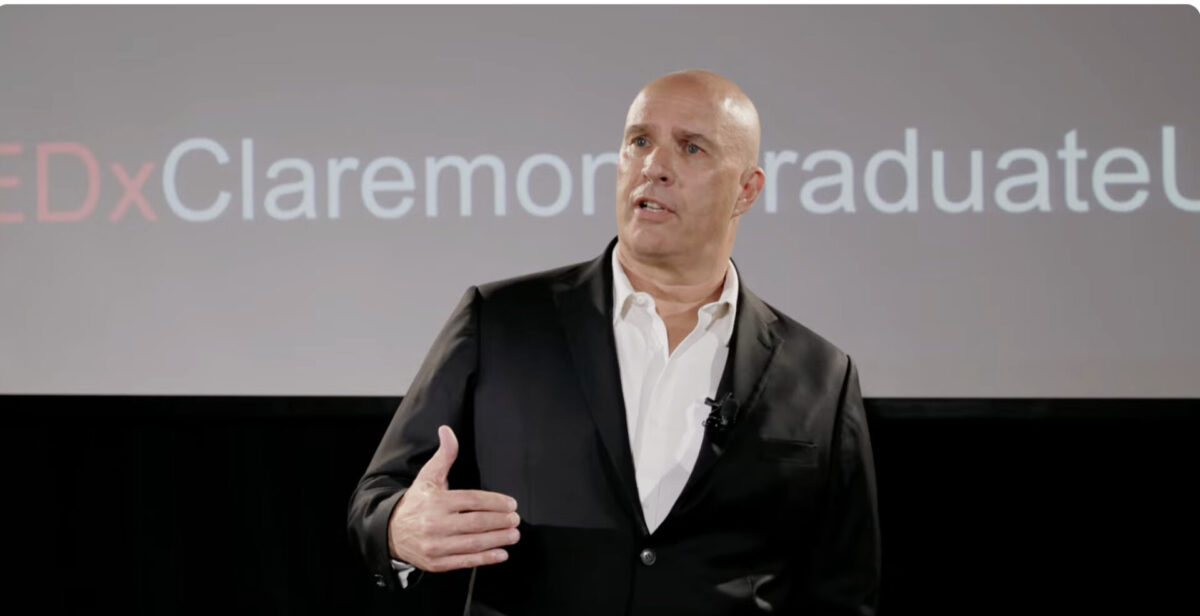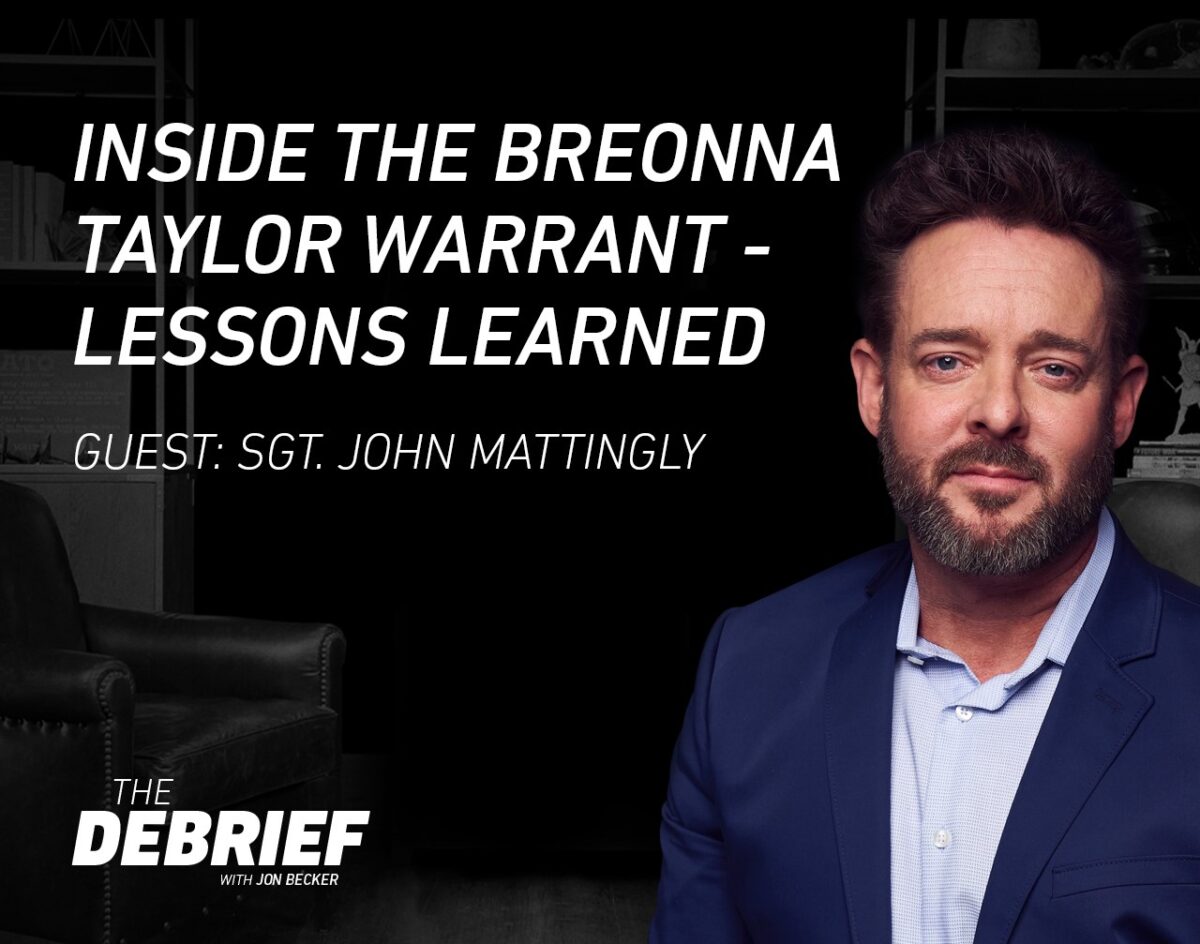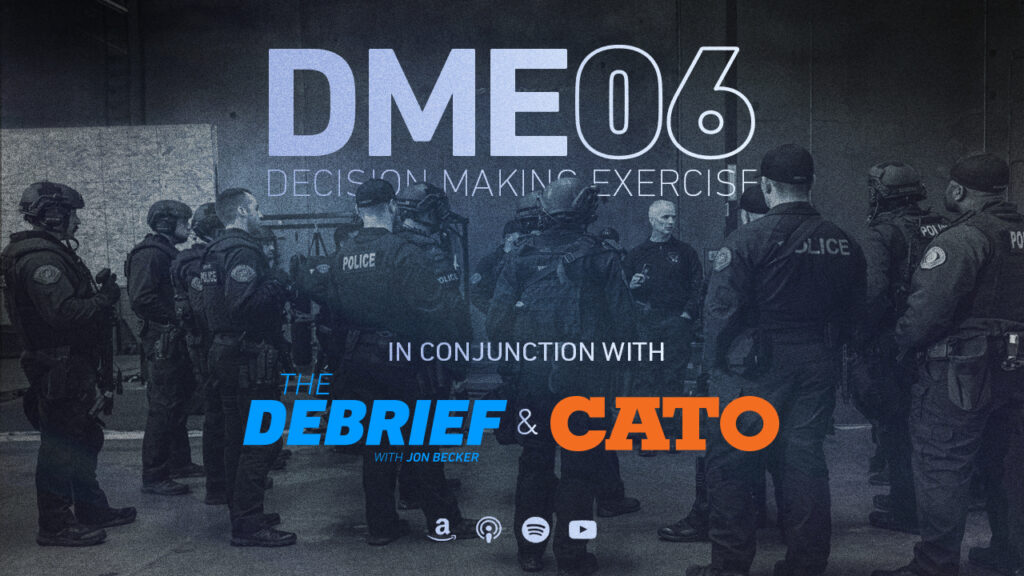Episode 57 – Post Traumatic Growth
jonathan@aardvarktactical.com
on
May 24, 2025
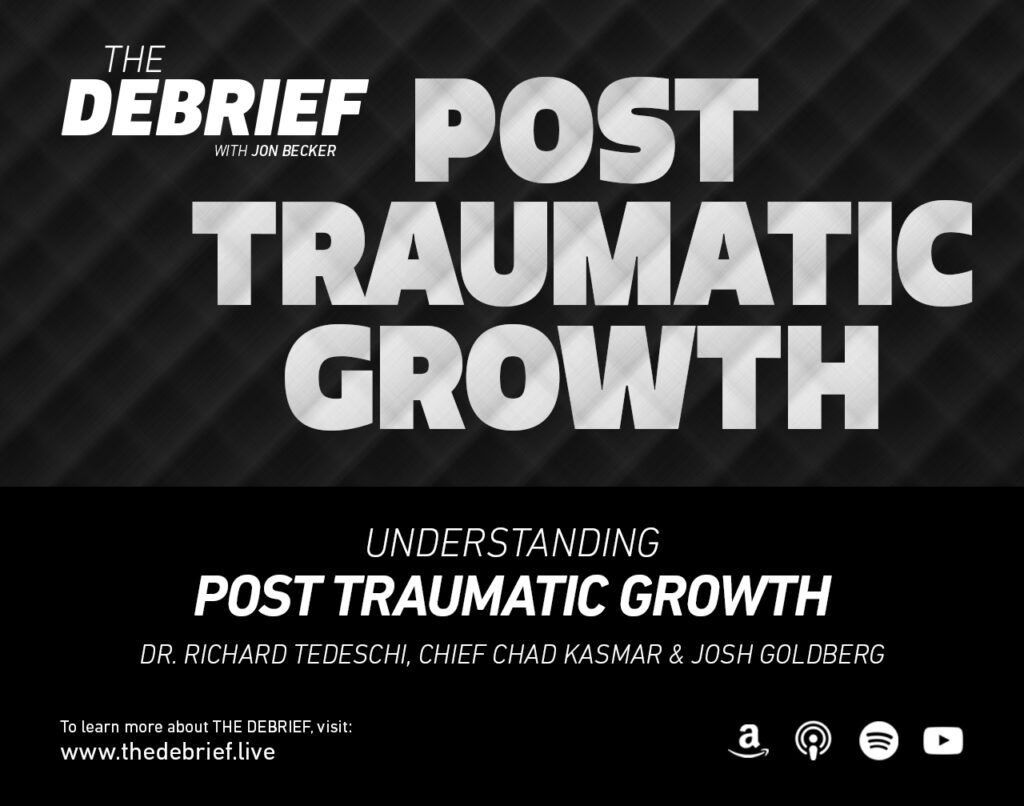
Episode 57 – Post Traumatic Growth
Description
On this episode of The Debrief we are going to be looking at Post Traumatic Stress and Post Traumatic Growth. These are two topics that I am extremely passionate about because, as you might imagine, each incident we cover on The Debrief has had a profound effect on everyone involved. Over the years that I have been working with teams and the years I have hosted this show I have seen people destroyed by their experiences. Yet I have also seen others use the trauma they endured to build a stronger, happier and more purposeful version of themselves.
Although I have certainly seen patterns, I have always wondered what separated these two groups of people, which is why I wanted to have this discussion on Post Traumatic Growth. Simply put, there is a LOT we can do to prepare for and respond to traumatic incidents that will reduce the fallout to those involved.
All of my guests today have a different perspective on Post Traumatic Growth. Dr. Richard Tedeschi is the world’s foremost authority on Post Traumatic Growth and literally coined the expression. His work forms the foundation for most PTG programs. Josh Goldberg is the CEO of Boulder Crest Foundation, a nonprofit whose Warrior Path and Struggle Well programs have reached over 100,000 people. And finally, Chief Chad Kasmar is the current Chief of Police in Tucson, Arizona. Following the suicide of a friend and former fellow officer, Chad has led a revolution in the way his city prepares and supports their staff for traumatic incidents. He has a truly unique perspective on the implementation of these types of programs.
I hope you enjoy this deep dive into Post Traumatic Growth and that this episode inspires you and your agencies to improve on the way we prepare and treat our warriors and first responders.
Guests
Dr. Richard Tedeschi – Clinical psychologist and researcher who coined the term “Post Traumatic Growth.” His work laid the foundation for PTG research and training programs worldwide.
Josh Goldberg – CEO of Boulder Crest Foundation, leading the development of the Warrior PATHH and Struggle Well programs for military and first responder communities.
Chief Chad Kasmar – Chief of Police in Tucson, Arizona, who has pioneered trauma-preparation and support initiatives in his department following personal loss and professional insight.
Resources
Boulder Crest Foundation – www.bouldercrest.org
Boulder Crest: Reborn – YouTube
Episode 56 – The Lindt Café Hostage Siege
jonathan@aardvarktactical.com
on
May 5, 2025
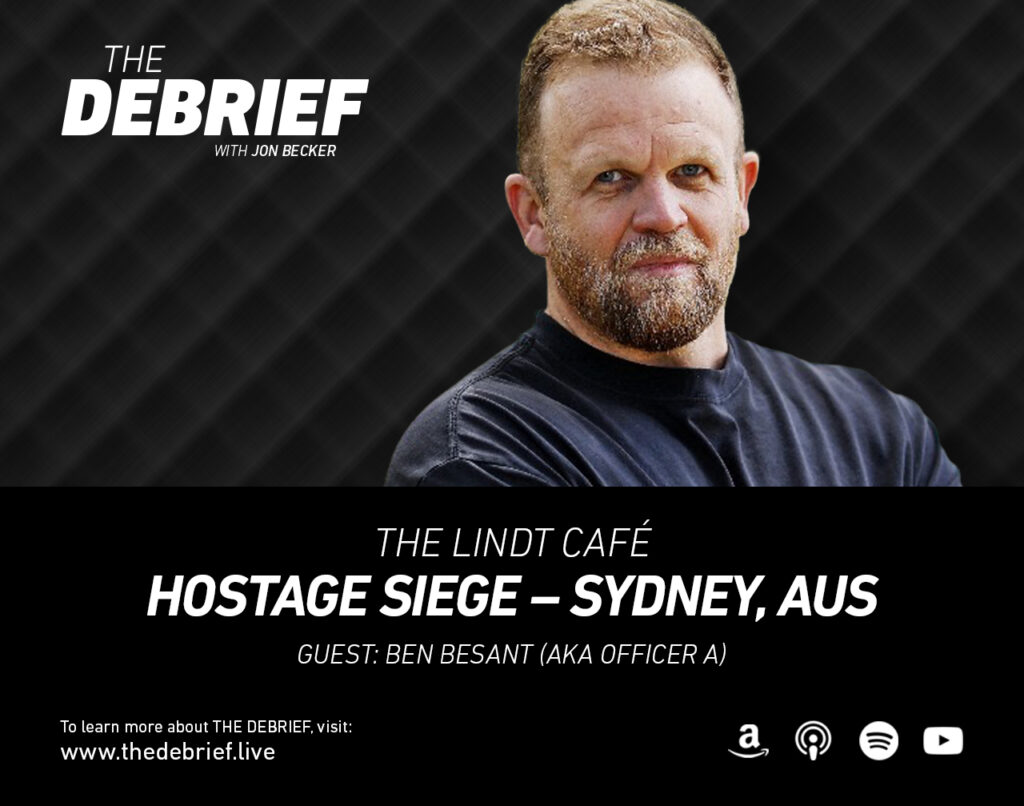
Episode 56 – The Lindt Café Hostage Siege
Description
On the 15th of December 2014, a terrorist took over the Lindt Chocolate café in Martin Place, in the heart of Sydney, Australia, holding 18 customers and staff hostage, creating a siege that would last for over 16 hours. Although numerous hostages escaped, by the time the event concluded, two innocent people were dead, and four others were injured.
For ten years, this incident was suppressed under a government-mandated gag order. This prevented members of the New South Wales Police Tactical Operations Unit (TOU) from even publicly revealing their names. As a result, despite a detailed and scathing coroner’s inquest report—the largest and most expensive in Australian history—there has been very little discussion about what actually happened that night, particularly from a tactical perspective.
In keeping with the standard policy of The Debrief, we will not be discussing the name, objectives, or affiliations of the terrorist in the hope that time will erase his memory. We will, of course, be discussing the names of the team, and in this case, hostages, because they are heroes and need to be remembered. I hope you enjoy my conversation with Ben Besant.
Guests
Ben Besant, identified as ‘Officer A’ in the coroner’s report, was the lead member of the Alpha Team during the intervention and the officer who engaged and killed the terrorist. He is the author of Tiger! Tiger! Tiger!, a book that details not only what happened that night but also chronicles his personal battle to recover his mental health following the Lindt Café siege.
Resources
Ben Besant – https://tigertigertigerbook.com/
Facebook – https://www.facebook.com/profile.php?id=100086482286065#
Resolute Ready – https://resoluteready.com/
Official Report – https://coroners.nsw.gov.au/documents/findings/2017/lindt_cafe_findings-and-recommendations.pdf
Episode 55 – UVALDE – What Really Happened at Robb Elementary?
jonathan@aardvarktactical.com
on
April 16, 2025
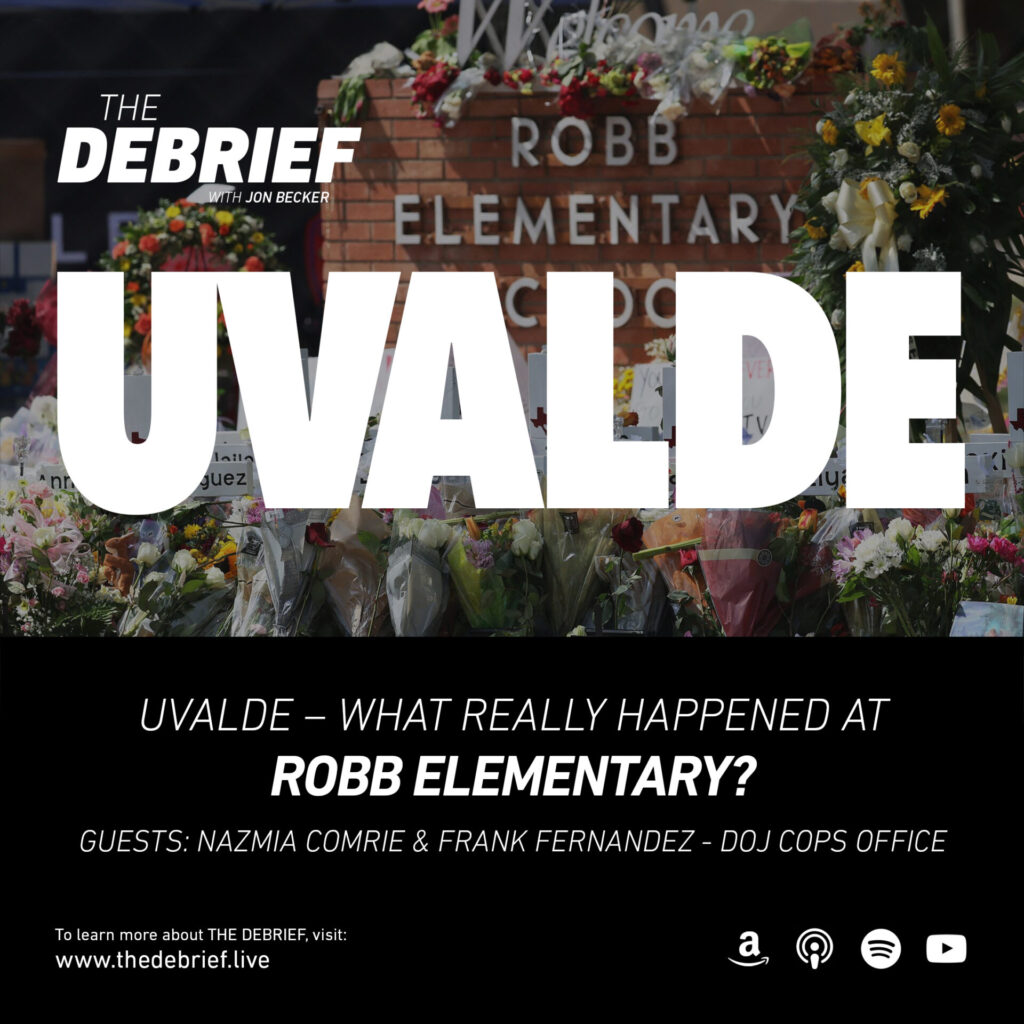
Episode 55 – UVALDE – What Really Happened at Robb Elementary?
Introduction
On May 24, 2022, an active shooter took the lives of 19 children and two staff members and physically and mentally injured the survivors, their families, staff, teachers, and the broader community in Uvalde, Texas. At the request of Uvalde’s leadership, the U.S. Department of Justice established the Critical Incident Review (CIR) to conduct an independent, objective assessment of what happened that day and assess the systems in place in the weeks leading up to May 24. The goal of the episode is to provide information to those most affected by the tragedy and to build knowledge regarding how to best respond to incidents of mass violence. This panel will provide an overview of the incident and present observations and recommendations from the DOJ report in the areas of tactics, leadership, and incident command.
Guests
Nazmia E.A. Comrie is a sociologist (policing assistance and reform) at the U.S. Department of Justice Office of Community Oriented Policing Services (COPS Office). She provides leadership for the development, implementation, and delivery of technical assistance efforts to state, local, tribal, campus, and territorial law enforcement agencies across the country as the program manager for the Collaborative Reform Initiative (CRI) Technical Assistance Center and CRI: Critical Response programs. Nazmia has more than 13 years of experience in managing programs in the areas of police reform, mass demonstrations, agency safety and wellness, and combating human trafficking, hate crimes, and interpersonal violence. To date, Nazmia has authored and co-authored a number of publications relevant to her areas of expertise and the criminal justice field as a whole, including the “Critical Incident Review: Active Shooter at Robb Elementary School” and “Building Stronger, Safer Communities: A guide for law enforcement and community partners to prevent and respond to hate crimes.” In addition, Nazmia was a significant contributor to the “After-Action Assessment of the Police Response to the August 2014 Demonstrations in Ferguson, Missouri” report that was released in 2015. Nazmia received her bachelor’s degree in psychology from the University of Rochester and her master’s degree in criminal justice from University at Albany, where she worked on research involving homicides, wrongful convictions, community policing, and gangs.
Frank G. Fernandez is currently the president of Blueprints 4 Safety (B4S) Strategies Group LLC; a security and risk assessment consulting firm specializing in vulnerability assessments, strategic planning, and best practice policing/public safety strategic development. Aside from his current engagement in the private sector, Fernandez possesses extensive executive-level government and law enforcement experience in the Miami metropolitan area, as well as adjunct faculty experience in the Miami-Dade academic arena. During his 25 years of service in the law enforcement field, Fernandez’s experience includes top leadership positions such as deputy chief of police and chief of operations for the Miami Police Department (MPD), as well as key positions in Patrol, Narcotics, Crime Suppression, Tactical and Investigations Unit, Community Affairs Section, and the Neighborhood Enhancement Team (NET). He also held team leader and command positions in the Miami Police SWAT team. Fernandez has worked as an expert police consultant to the U.S. Department of Justice, Civil Rights Division, for over 11 years. He is currently the Vice-Chairman and past Chairman of the IACP Firearms Committee. Post-retirement from MPD in 2010, Fernandez served as police chief and assistant city manager for public safety for the City of Hollywood, FL. Subsequently, he was recruited by the City of Coral Gables, FL, to be the assistant city manager/director of public safety with operational authority over Police, Fire, and Emergency Management in addition to Information Technology, Labor Relations and Risk Management, and Human Resources Departments. Fernandez holds a Bachelor’s Degree from Barry University and a Master’s Degree from Nova Southeastern University. He has served as an adjunct professor at Miami-Dade College School of Business and at Florida International University Department of Criminology and Criminal Justice. In 2018, Fernandez was the Chairman for the American Heart Association and has recently been appointed as a Board Member for the greater Miami/Fort Lauderdale Board of Directors. He has been awarded the National Latino Peace Officers Association’s Chief’s Leadership Award, and the nationally recognized Police Executive Research Forum’s Gary P. Hayes Leadership Award, among others.
Resources
DME-06 – UVALDE
jonathan@aardvarktactical.com
on
April 16, 2025
Episode 54 – LA Fires – The First 12 Hours
jonathan@aardvarktactical.com
on
April 16, 2025

Episode 54 – LA Fires – The First 12 Hours
Introduction
Just after 6pm on January 7th, the fire ignited in Eaton Canyon, California. In a matter of hours, powered by sustained 60 mile an hour winds, with gusts as high as 100 miles an hour, the fire spread through Pasadena and into the neighboring area of Altadena. In the days that followed, the Eaton Fire grew to become one of the worst fires in California history—killing 17 people, burning more than 14,000 acres, destroying more than 9,400 structures, and damaging more than 1,000 others. In the city of Pasadena, approximately 150 structures were destroyed, but because of the efforts of the police and fire departments, no one in Pasadena lost their lives. My guests today are Captain Trey Sorensen from the Pasadena Fire Department and Sergeant Bobby Crees from the Pasadena Police Department. Trey was the evacuation group supervisor and Bobby was the command post supervisor during the first 14 hours of the fire. Although the fire burned for almost two weeks, for this debrief we will be looking at the first 12 hours of the fire and how the police and fire departments struggled to save lives as an uncontrollable fire tore through their city.
Contact Info
Capt. Trey Sorensen – tsorensen@cityofpasadena.net
Sgt. Bobby Crees – bcrees@cityofpasadena.net
Episode 53 – Austin PD LODD: A Wife’s Perspective – Kim Pastore
jonathan@aardvarktactical.com
on
April 16, 2025
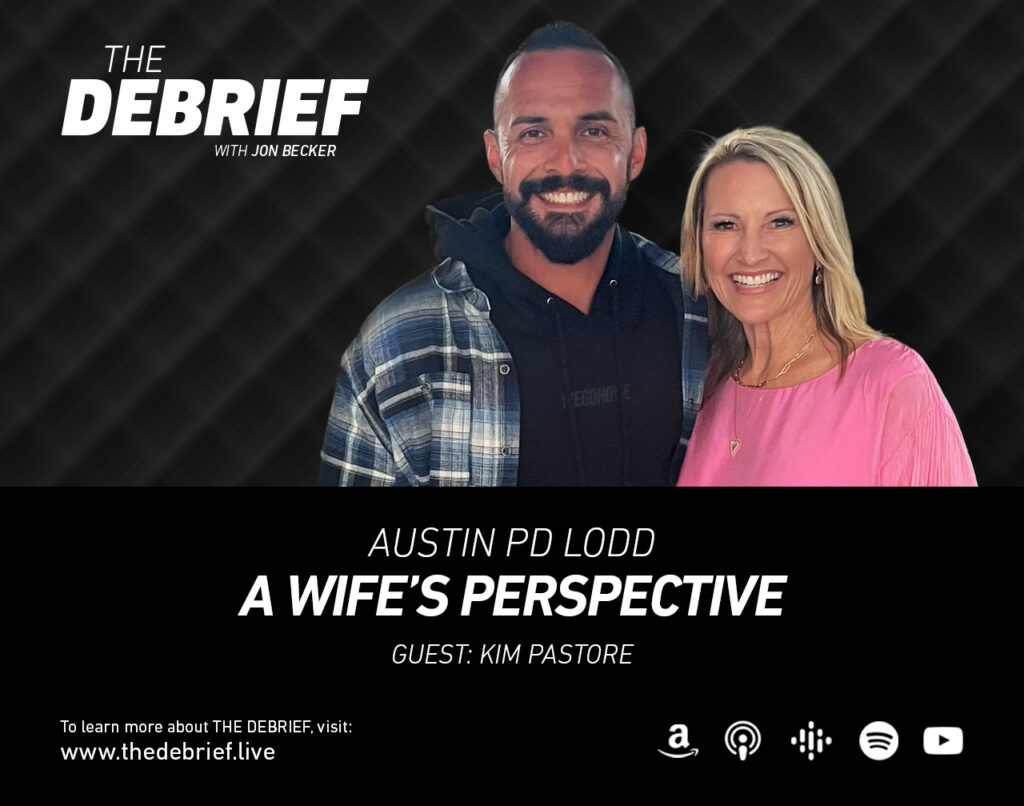
Episode 53 – Austin PD LODD: A Wife’s Perspective – Kim Pastore
Introduction
My guest today is Kim Pastore. Kim’s husband Jorge Pastore was killed on November 11, 2023, while attempting to rescue hostages with the Austin, TX SWAT Team. This was a case we covered previously with the team in Season 4, Episode 5, released on November 11, 2024. However, Kim has graciously agreed to sit down with us and debrief the incident from her perspective. This is an episode we have wanted to do for a long time—to consider the spouse’s perspective on a LODD (Line of Duty Death) as well as explore the best practices that an agency, team, and individual officer can engage in to make this process as smooth as possible for the family.
Contact Info
Episode 52 – Lessons Learned from Elite Unit Selection Processes – John Dowd
jonathan@aardvarktactical.com
on
April 16, 2025

Episode 52 – Lessons Learned from Elite Unit Selection Processes – John Dowd
Introduction
My guest today is John Dowd. John is a former Navy SEAL who 15 years ago started SOFware, LLC—a company that develops software and consults with elite units in their assessment and selection processes. John and his team work with many of the world’s most elite units, assisting them not only in choosing the right people but also in developing those individuals throughout their careers. John’s views on selection, and the lessons learned by his team over the past 15 years, provide extremely valuable insight for any team looking to improve how they evaluate and select personnel.
Book Recommendation
Assessment of Men: Selection of Personnel for the Office of Strategic Services: The OSS Assessment Staff, Rinehart & Company, Inc. — ASIN: B000M6BR7W
Contact Info
You can reach John and his team at best.practices@sofwarellc.com, and can learn more about their software, FORGE, at https://sofwarellc.com/forge.
Episode 51 – Operator Health and Performance with Casey Glass
jonathan@aardvarktactical.com
on
April 16, 2025

Episode 51 – Operator Health and Performance with Casey Glass
Description
My guest today is Casey Glass. Casey is the founder of Warfighter Health and Performance and for the past 11 years has been a Special Operations Strength Coach for US SOF units. Casey grew up on a ranch in Texas. In college she played soccer at Texas Christian University and interned with the strength and conditioning staff her senior year. While pursuing her master’s in Health and Fitness at Purdue University, she became their Graduate Assistant Strength Coach. She then went on to work for the University of Arkansas for 4.5 years, starting as a paid intern and leaving as the Associate Director of Olympic Sports Strength and Conditioning. Eleven years ago, she accepted a position that would change her life: working in the Human Performance Program for a US Special Operations unit, aiming to improve our warfighters’ operational performance and resilience. Last year, she founded Warfighter Health and Performance—an organization designed to bring the experience and skills our SOF units are receiving to law enforcement special operations units.
Book Recommendations
Why Zebras Don’t Get Ulcers by Robert Sapolsky – ISBN-13: 978-0805073690
Building the Elite by Craig Weller & Jonathan Pope – ISBN-13: 978-0578918099
Contact Info
https://www.warfighterhp.com
https://www.linktr.ee/warfighterhp
Episode 50 – Bank Robbery & Police Ambush Part 2: Lessons Learned
jonathan@aardvarktactical.com
on
April 16, 2025

Episode 50 – Bank Robbery & Police Ambush Part 2: Lessons Learned
Description
Intro On June 28, 2022, the Greater Victoria Emergency Response Team (aka GVERT) was working as a quick response team for narcotics surveillance when a call went out of an active bank robbery in progress. Two suspects, covered almost completely in body armor and heavily armed with SKS rifles were robbing the Bank of Montreal branch in nearby Saanich BC. The suspects had herded all of the bank patrons and employees into the back of the bank and then proceeded to wait more than 12 minutes in the entrance vestibule of the bank hoping to ambush and kill the responding officers. In accordance with their policy of remaining covert until suspects left the bank to avoid creating a hostage situation, responding officers from Saanich, Central Saanich and nearby Victoria PD descended on the area and inserted into covert locations around the bank. The GVERT team left the surveillance and headed immediately to the bank. As they arrived on scene and gained situational awareness, the two male subjects, covered head to toe in armor and armed with SKS 7.62 x 39 rifles with high-capacity magazines, exited the bank. The team raced into the parking lot in their surveillance van, deployed a flashbang, and began to exit to effect arrest. As they did the suspect nearest the van calmly turned and opened fire on the van. In just a few seconds, 6 of the 7 operators in the van were shot, some multiple times. All of them were injured and at least one of them was at immediate risk of death. The remaining team members and patrol officers returned fire eventually killing the suspects. What transpired over the next few minutes can only be described as a heroic performance by team members and army of patrol officers and other first responders who quickly transitioned from taking the suspects into custody, to searching for a possible third shooter, clearing the bank, freeing the hostages, dealing with numerous IEDs and most importantly providing care and transport for their injured teammates. This is the first of a two part series that will look at this event through the several different perspectives. This episode will be unlike any previous episode of the debrief because of the sheer number of people we were able to interview. The agencies, patrol officers and teams involved in this incident gave us access to more than a dozen people who responded to the event. As a result, we will be seeing incident from the perspectives of the team commander, team leaders, detached sniper element, assaulters, medics, and even the patrol supervisor for the day. It is our hope that doing so will allow us to understand not only what happened, but how their training allowed them to succeed in an almost unwinnable situation and how their lessons learned from the event informed future training and tactics. In this first part we will look at the timeline of the event itself, in part two we will sit down on video with three of the team members to look back at the events and formally discuss lessons learned. In keeping with the standard policy of the debrief we will not mention the suspects’ names or objectives in the hopes that they will be lost to the sands of time. We will however mention the names of responding officers as they are heroes and need to be remembered as such. One additional note, this episode has a corresponding decision-making exercise created by the California Association of Tactical Officers. Please be sure to run that exercise with friends or your team.

